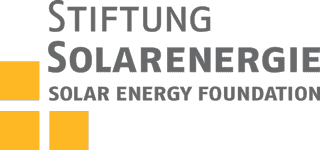Solar villages

In order to make a lasting contribution to poverty allenation in developing countries, we pursue a concentrated approach to village development: the supply of solar energy to an entire village.
The Solar Energy Foundation provides all households with a basic power supply with solar energy at a subsidised price: it consists of 2 LED lamps as well as the possibility of mobile phone charging. The price to be paid by households is based on what the poorest families in the village can afford. This is to ensure that each family receives a basic power supply.
The solar systemis paidin monthly instalments over a period of 6 to 12 months. The money is used to fund maintenance and service. People use the system and now pay for solar power instead of kerosene. After the instalment payments have been completed, the solar installations become the property of the families.
In many solar villages, in addition to households, public buildings (schools, health stations, churches) also received solar energy. In addition, solar water pumps or street lamps have been installed. Sustainable success is ensured by local technicians responsible for maintenance and service on site.
The aim of the Solar Village Programme is to give the development of an entire village community an impulse for further development. Our experience since the first solar village in Kechemober (2005) has impressively demonstrated how much the solar basic supply advances village development.
Our solar villages:
Ethiopia
- Arso Amba, 4,500 inhabitants (2014)
Movie (SWR, german) - Dire, 4,000 inhabitants (2009)
- Rema, 6,000 inhabitants (2007)
Movie Movie - Kechemober, 150 inhabitants (2005)
Cambodia
- Chbar Chros, 500 inhabitants (2015)
Kenya
- Barimbate, 3,500 inhabitants (2020)
- Kibera (Nairobi), 600 inhabitants (2017)
Uganda
- Kinabi, 500 inhabitans (2021/2022)
- Buikwe, 500 inhabitans (2021)
- Ruhita, 500 inhabitants (2021)
- Buwagi, 500 inhabitants (2019/2020)
- Nakibano, 500 inhabitants (2019/2020)
- Bududa, 500 inhabitants (2019/2020)
- Rwenjeru, 500 inhabitants (2019/2020)
- Sironko, 500 inhabitants (2017)
- Hima, 500 inhabitants (2017)
- Kinoni, 500 inhabitants (2017)
- Isukwe, 500 inhabitants (2017)
- Luwero, 500 inhabitants (2017)
- Kasozi, 850 inhabitants (2016)
The mayor of one of our solar villages describes it this way: “The goal in this world must be to improve living conditions in order to alleviate poverty. But you cannot change life without energy and light. This is a fundamental need. And we can now satisfy this for the first time.”




Our intention …
Work situation:
.
.
.
Health:
.
.
.
.
Education:
.
.
.
Security:
.
.
.
Income:
.
.
.
.
Water supply:
.
.
.
Communication in the village:
.
.
.
Communication with the world outside:
… and what the residents say
“I used to have to do all the important work until sunset. But now at noon, when the sun is burning, I can take a break and finish work in the evening. Finally, I have enough time to get it all done.”
“I have lung problems. I was often sick because of the smoke from the kerosene lamp. Why? Because every morning I spit out black slime that was in my lungs through the smoke of the kerosene lamp. But since I have solar light, I feel better.”
“Before we got solar light, we also learned in the evening, but much less than today. Today we can use the extra time for both: homework for school and to help our parents do housework.”
“The crime rate is significantly reduced, not only because of the street lamps, but also because of the solar light inside the huts. That keeps many thieves away. Even the hyenas are no longer coming.”
“With the solar light, I can do handicrafts in the evening, for example sewing clothes or baking bread. So I have significantly improved my income. At the same time, the cost of light has decreased because the solar light is cheaper than the kerosene lamp.”
“In the past, our women and children had to go long distances during the day to get water from the source. With the solar energy and the water pump, this strenuous path is no longer necessary every day. Time can now be used much more productively.”
“Before we got solar light, we didn’t meet so often in the evening to talk. Now we use the light to come together, discuss and exchange experiences. “
“We now have the opportunity to stay in touch with the outside world. For example, we can easily charge our mobile phones. The operation of radios is also much easier, because we no longer need dry batteries. Solar energy has taken our village a big step forward.”




